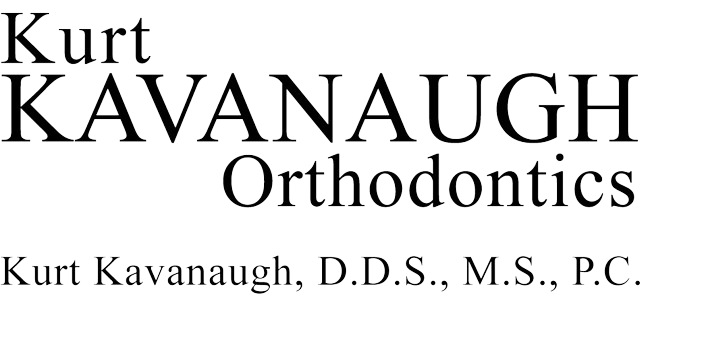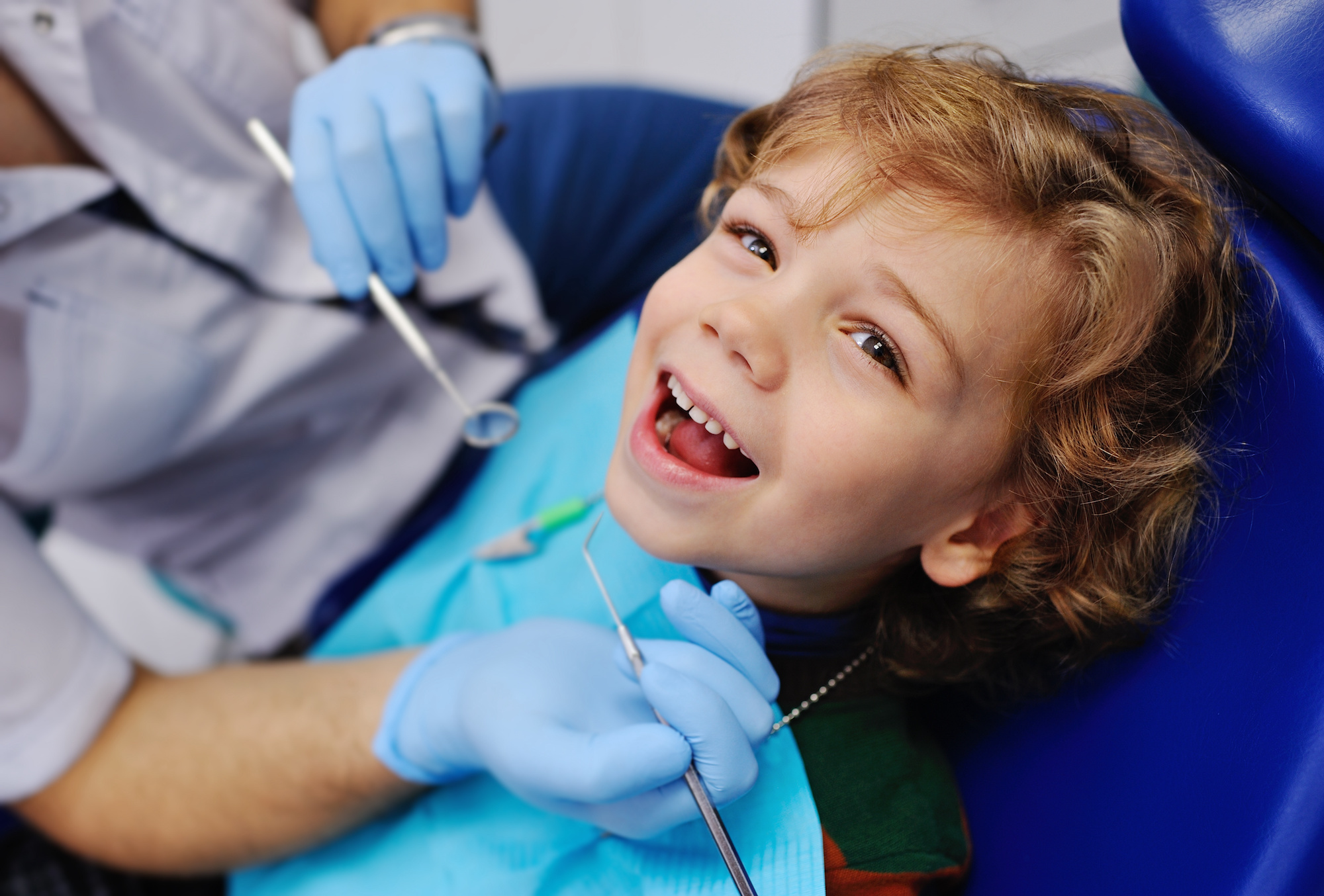Dental emergencies happen. According to the American Dental Association (ADA), dental emergencies “are potentially life threatening and require immediate treatment to stop ongoing tissue bleeding [or to] alleviate severe pain or infection.” They’re often unprecedented, but one should always keep tools handy in case an emergency occurs—especially during our ongoing COVID-19 (coronavirus) worldly crisis because this can make the difference between saving a tooth or enduring infection, pain, or heaven forbid total tooth loss. For just these instances, our team at Kurt Kavanaugh Orthodontics has come up scenarios that are considered dental emergencies and have included tips to adhere by in case of a dental emergency.
Dental Fracture: Broken or Chipped Teeth
Broken or chipped teeth are actually the most common form of dental injury. This injury occurs when a person experiences blunt force trauma to their oral region. If your teeth have been chipped or broken, be sure to schedule an appointment with your Kansas City orthodontist within 12 hours. If cannot you get a hold of Dr. Kavanaugh, you can also opt to go to the nearest emergency room. Keep in mind that a tooth is a living organism made up of live tissue, nerves, and dentin so, try to locate any pieces of the tooth that have broken off. It may be very possible to reattach them to the crown with tooth-colored bonding material.
Detached Teeth
If a permanent adult tooth has been detached from its socket (this is known as an avulsed tooth), immediate attention is required. If a child’s primary baby tooth has become detached, don’t worry as this is a non-emergency and does not require special attention from your orthodontist or an emergency room; primary baby teeth don’t need to be replanted. Follow the next instructions carefully to save the detached tooth:
1. What you’ll need:
- Latex gloves
- Clean water
- Gauze
- Cold milk
- Cup or plastic bag
2. Find the detached tooth: Locate the tooth that was detached out of its socket. Once located, place your latex gloves on and gently clean it off with water. Be careful not to touch the root portion of the tooth as this is a living tissue and want to avoid compromising the tooth by causing damage or infection.
3. Return detached tooth into its socket: Hold the tooth in its the proper orientation just under its socket. Apply a gentle, continuous pressure to the tooth and slide it back into its socket. Hold the tooth in place for five minutes. Use gauze (or a wad of wet tissue) to help grasp and hold the tooth in place.
4. Visit your orthodontist as soon as possible: Seek emergency dental treatment after the step three as soon as possible. If you can’t receive assistance from Dr. Kavanaugh nearby, visit the emergency room for assistance and be sure to ask whether a tetanus shot or booster is required.
5. If returning the tooth into its socket is not possible: Place the detached tooth into a cup of cold milk, into a plastic bag with your saliva, or in between your teeth and cheek. Control the bleeding from the tooth socket by applying pressure to the area with the gauze and take the patient and the detached tooth to the emergency room straightaway.
Partially Displaced Teeth
A partially displaced tooth is when the tooth is pushed in further than normal, moved sideways out of alignment or pushed partially out of the jaw. If this occurs you must visit a dentist or oral surgeon within 6 hours of the accident. Even though the displaced tooth is not detached, this is still considered an urgent emergency. Possible outcomes from a partially displaced tooth are risking infection to your surrounding oral tissue, suffering permanent damage to your nerves, total loss of your tooth, etc. A careful examination of the mouth from your orthodontist or oral surgeon will uncover the extent of the damage and indicate what restorative dental treatments are required.
Soft-Tissue Injuries
Dental injuries often involve damage to not only teeth, but the soft tissue that surrounds them such as gums, tongue, jaw, and inner cheeks. Should your soft-tissue get damaged or injured, please follow the next instructions carefully:
- Clean the affected area – Wash and rinse the area with soap and water if possible or remove debris and foreign material by hand.
- Stop the oral bleeding – Bleeding can usually be controlled by applying direct, gentle pressure to gauze pads placed on the wound.
- Facial and oral pain – Over-the-counter medications will usually provide temporary relief.
- Seek professional help – If it can’t be controlled after about 10 minutes, go to an emergency room. If you have controlled the bleeding, schedule an emergency appointment with Dr. Kurt Kavanaugh immediately.
Partially Displaced Teeth
A partially displaced tooth is when the tooth is pushed in further than normal, moved sideways out of alignment or pushed partially out of the jaw. If this occurs you must visit a dentist or oral surgeon within 6 hours of the accident. Even though the displaced tooth is not detached, this is still considered an urgent emergency. Possible outcomes from a partially displaced tooth are risking infection to your surrounding oral tissue, suffering permanent damage to your nerves, total loss of your tooth, etc. A careful examination of the mouth from your orthodontist or oral surgeon will uncover the extent of the damage and indicate what restorative dental treatments are required.
Soft-Tissue Injuries
Dental injuries often involve damage to not only teeth, but the soft tissue that surrounds them such as gums, tongue, jaw, and inner cheeks. Should your soft-tissue get damaged or injured, please follow the next instructions carefully:
- Clean the affected area – Wash and rinse the area with soap and water if possible or remove debris and foreign material by hand.
- Stop the oral bleeding – Bleeding can usually be controlled by applying direct, gentle pressure to gauze pads placed on the wound.
- Facial and oral pain – Over-the-counter medications will usually provide temporary relief.
- Seek professional help – If it can’t be controlled after about 10 minutes, go to an emergency room. If you have controlled the bleeding, schedule an emergency appointment with Dr. Kurt Kavanaugh immediately.

How to Recognize A Dental Emergency
In addition to the dental emergencies listed above, other emergencies include:
- Severe dental pain from pulpal inflammation
- Pericoronitis or third-molar pain
- Surgical postoperative osteitis
- Dry socket dressing changes
- Abscess or localized bacterial infection
In contrast, the following are not considered dental emergencies:
- Routine oral examinations, radiographs, dental cleaning, and other preventive therapies
- Orthodontic procedures
- Extraction of asymptomatic (no infection/trauma) teeth
- Restorative dentistry; traditional braces, Invisalign, etc.
- Aesthetic dental procedures
In the Event of a Dental Emergency, Contact Us at Kurt Kavanaugh Orthodontics!
If you’re a patient of Dr. Kavanaugh’s, are receiving an orthodontic braces treatment, and aren’t sure what to do in the event of an emergency or accident with your dental braces, you can find out more through this article from the American Association of Orthodontists. If you’ve experienced any of the emergencies above and require immediate assistance, please contact our Kansas City office directly at (816) 420-8100 or our Sedalia office at (660) 829-2900.




